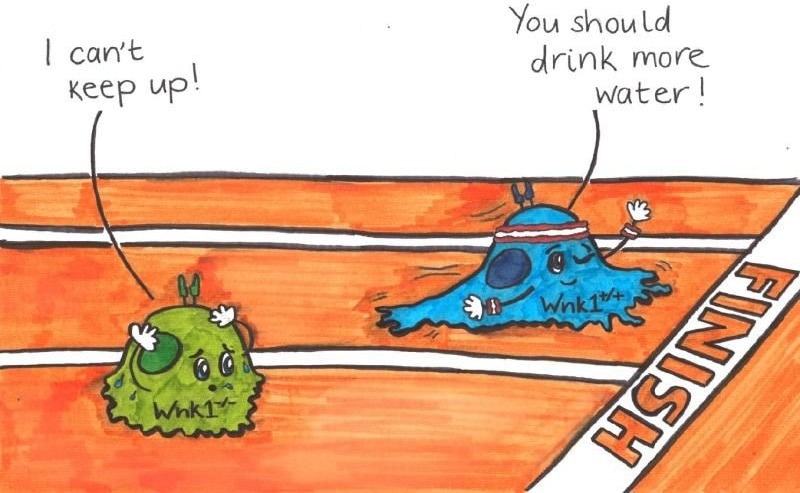Scientists at the Francis Crick Institute, in collaboration with Imperial College London, King’s College London, and the University of Cambridge, have demonstrated that the influx of water and ions into immune cells enables them to navigate to specific locations in the body.
 A T cell without WNK1 cannot move as fast as a T cell with WNK1, which triggers water and ion entry to swell the cell at the front, creating space for scaffolding to grow and for the cell to move. Image Credit: Damaris Bennett, the Immune Cell Biology Laboratory & Down Syndrome Laboratory, the Francis Crick Institute.
A T cell without WNK1 cannot move as fast as a T cell with WNK1, which triggers water and ion entry to swell the cell at the front, creating space for scaffolding to grow and for the cell to move. Image Credit: Damaris Bennett, the Immune Cell Biology Laboratory & Down Syndrome Laboratory, the Francis Crick Institute.
In response to illness, human bodies release chemical signals known as chemokines, guiding immune cells called T cells to the infection site. Previous research linked this process to a protein called WNK1, which activates surface channels, allowing ions (such as sodium or potassium) to enter cells. However, the purpose of ion influx for T cell movement remained unclear.
The study, which was published in Nature Communications, reveals that, after receiving a chemokine signal, WNK1 is activated at the front of T cells, known as the “leading edge.” The researchers observed that WNK1 activation opens channels on the leading edge, leading to an influx of water and ions.
The team proposes that this water flow causes the cells to swell on the front side, creating space for the “actin cytoskeleton”—the internal cell scaffolding—to expand. This propels the entire cell forward, and the process repeats.
Using gene editing to inhibit WNK1 production in mice or employing an inhibitor to block WNK1 activity, the researchers observed that T cells in these mice slowed down or ceased movement entirely.
Notably, compensating for the loss of WNK1 and accelerating cell movement was achieved by placing the cells in a watery solution, inducing water uptake and swelling. This highlights the pivotal role of water uptake, controlled by the WNK1 protein, in cell migration.
The researchers suggest that the mechanism uncovered could apply to various cell types beyond immune cells.
Through this research, we’ve unraveled one of the mysteries of T cell movement, showing that WKN1 causes water and ions to flow into T cells, giving them the space to grow their scaffolding and move forward.”
Victor Tybulewicz, Group Leader, Immune Cell Biology Laboratory & Down Syndrome Laboratory, The Francis Crick Institute
Tybulewicz added, “Although we looked at T cells, it’s likely that this process is happening in many of our cells and even in diseases like cancer, which is important as when cancer cells spread, it is harder to treat.”
Leon de Boer, Former Postdoctoral Researcher at the Crick and now at the Karolinska Institute in Sweden, stated, “This process has been speculated about for decades, but advances in technology have finally allowed us to show how WNK1 helps T cells migrate around the body – water comes in almost like a jet engine moving the cell forward.
Boer added, “I am excited that researchers are starting to investigate WNK1 inhibitors to treat diseases like cancer. In my new project, I’m looking at how properties of membranes help cancer cells to move around the body.”
T cells with and without WNK1
T cells without WNK1 (right) cannot move as fast as T cells with WNK1 (left). Video Credit: Leon de Boer
Source:
Journal reference:
de Boer, L. L., et al. (2023) T cell migration requires ion and water influx to regulate actin polymerization. Nature Communications. doi.org/10.1038/s41467-023-43423-8.